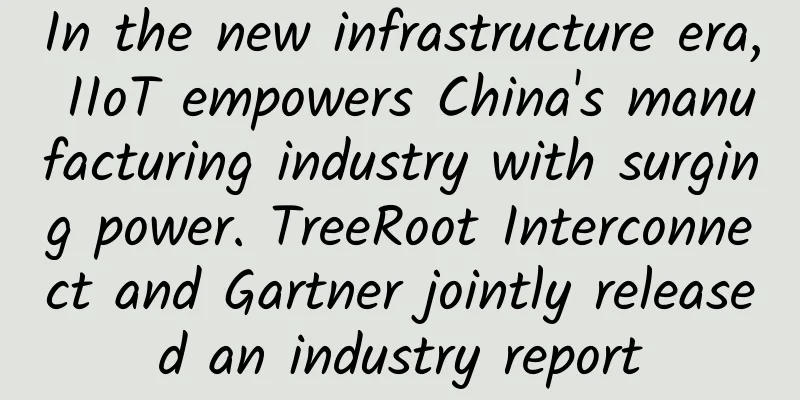Enterprises need to increase investment in mobile 5G fixed fiber networks

|
As the world continues to go wireless, it’s also becoming more wired. Behind today’s mobile networks are hundreds of thousands of miles of fiber, connecting mobile networks to ground-based equipment, ultimately ensuring enterprise users can communicate from anywhere. In the rush to meet the mobile hype of 5G and the use cases that the entire package is expected to bring, this “invisible fiber” often remains unpraised. As 5G technology begins to come online, there are some very exciting use cases emerging. However, if the investments made on the device side do not meet the requirements placed on it by the cellular side: low latency, ultra-high bandwidth, support for a large number of discrete applications and quality of service, 5G will not be as successful for MSPs and their customers.
Challenges of mobile networks The reason why the challenge is so great is because of the legacy mobile networks that have been built over decades. On one hand, 5G promises to be a game changer in every vertical; on the other hand, it will push the capabilities of today’s networks to meet or even exceed their current limitations. This will be bad news for businesses that rely on 5G to grow, compete, and profit. In short, the financial resources that MSPs invest in the cellular portion of 5G require a corresponding investment in the fixed back-end, mid-end, and head-end networks. Because MSPs can choose to launch different use cases and services on 5G networks, conventional wisdom holds that multiple different network architectures are needed to meet these individual needs. MSPs agree that it would be cost-prohibitive to use 3G and 4G networks built on the same methodology. So, instead of multiple legacy networks, why not adopt a single flexible underlying infrastructure - that can serve many different needs? 5G requires keeping pace with fixed networks Here, fiber is fundamental to 5G because without it, MSPs would have more spectrum capacity than can be pulled through the network using current backhaul technologies. Economically, wireless microwave connections consume about 10G of power, and according to the GSMA, 5G will require up to 10G of bandwidth per end-user device alone. Add to that the expected growth in enterprise and consumer devices, applications, and enterprise endpoints brought on by the Internet of Things, and today’s networks will be overwhelmed very easily. Time for fiber to drive 5G deployment 3GPP integrated access and backhaul is included in the recently completed Release 16 standard, which proposes using excess radio spectrum to bridge the gap or hand it over to fiber. But it is only part of the solution, and public networks compliant with Release 16 are not expected to be in production until 2022, according to analysts. In the interim, MSPs must take a holistic look at their networks and imagine what’s possible with more fiber. Currently, MSPs are reaching a fiber exhaustion point where current assets are stretched to their limits, while demand for fiber pairs is exploding as radio-based backhaul solutions reach their current limits. But if careful attention is paid to the fiber portion of the network, fiber can act as a catalyst and force multiplier, maximizing radio investments while meeting new demands. There is a lot at stake for 5G in the coming months, and expect to see more progress on the fixed side of 5G networks alongside radio. There has been a lot of progress in radio standardization for 5G, and in fact, some MSPs are spearheading 5G deployments in major cities. With a fiber foundation, the promise of 5G for businesses and consumers will shine even brighter. |
<<: How to reduce customer churn through network visibility?
>>: Overview of important developments in the global 5G field in November 2020
Recommend
5G phones have been available for three years. Why is 5G in the United States so slow? Three major problems remain unsolved
Since the advent of 5G technology, U.S. wireless ...
Spring is coming, the cancellation of data roaming charges? Beware of scams
Mr. Dongguo and the wolf, Lu Dongbin and the dog,...
Talk about RocketMQ master-slave replication
RocketMQ master-slave replication is one of Rocke...
New 5G transmission specification helps support demanding 5G applications
The Broadband Forum has published its technical r...
Engineers announce QUIC protocol completes RFC 9000 release
According to foreign media, the Internet Engineer...
RAKsmart cloud server starts from $1.99/month, 30% off, available in US/Hong Kong/Japan/Singapore data centers
Let's pay attention to the information of clo...
CloudCone: $16.5/year-dual-core/1GB/50GB/3TB@1Gbps/Los Angeles data center
CloudCone's Christmas Sale has begun. The mer...
Ministry of Industry and Information Technology: my country has built a total of 1.037 million 5G base stations
5G is one of the topics that all sectors of socie...
What are the categories of 800G optical modules?
800G optical modules have entered mass production...
VPSMS Mid-Autumn Festival Promotion: VPS monthly payment 38% off quarterly payment 32% off, Los Angeles CN2 GIA line monthly payment starts from 53 yuan
VPSMS is shared in the blog for the first time. I...
Global semiconductor industry capital expenditure will reach nearly $150 billion in 2021
[[426618]] On the 29th, the Semiconductor Industr...
The interviewer asked about the ZAB protocol right away, and I was trembling...
[[391275]] Zookeeper achieves the final consisten...
Make your customers want you to be theirs with Riverbed Digital Experience Management
[51CTO.com original article] If you download a mo...
Huawei awards the father of Polar code to pay tribute to basic research and exploration spirit
[Shenzhen, China, July 26, 2018] Today, Huawei he...









